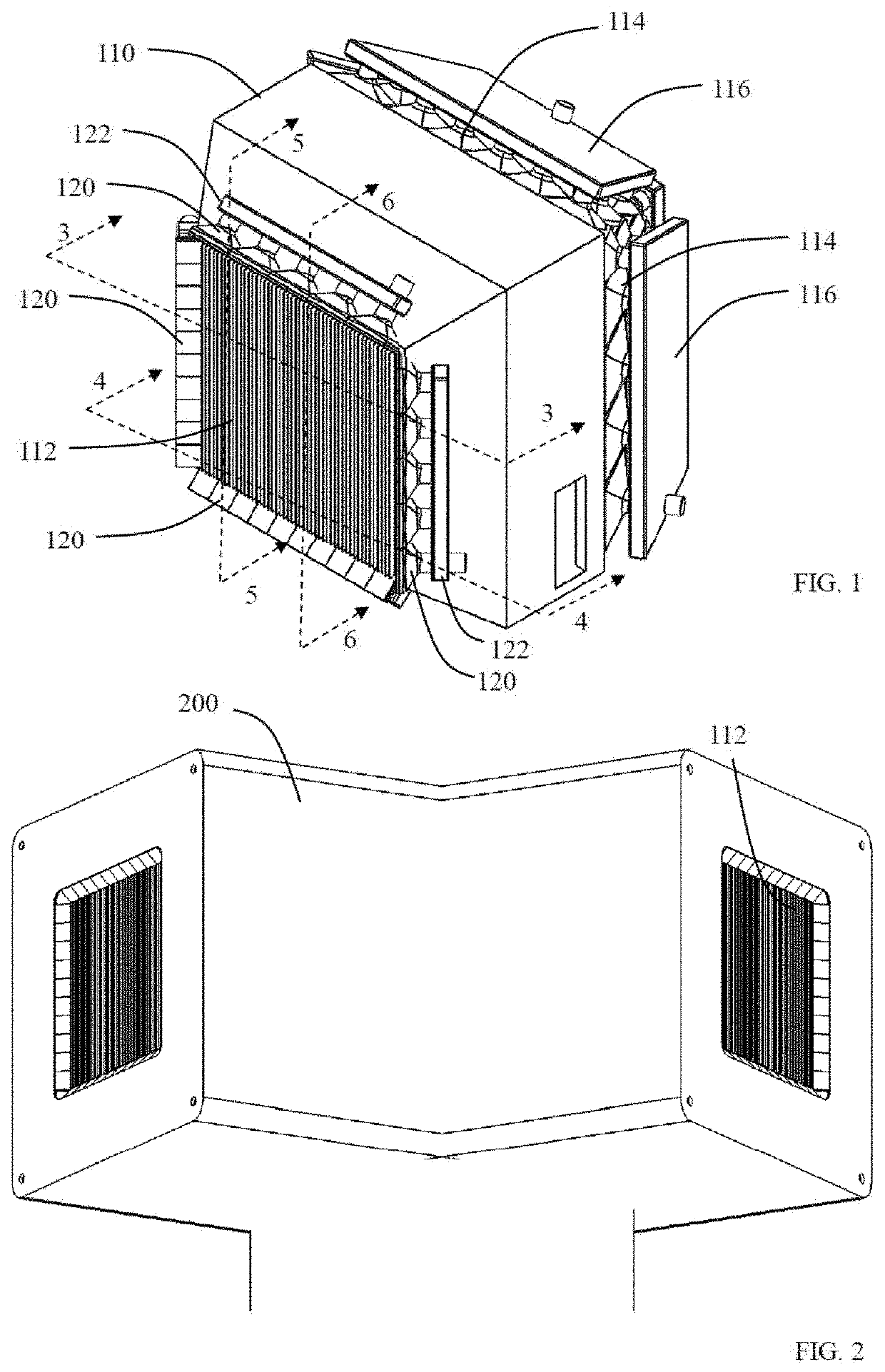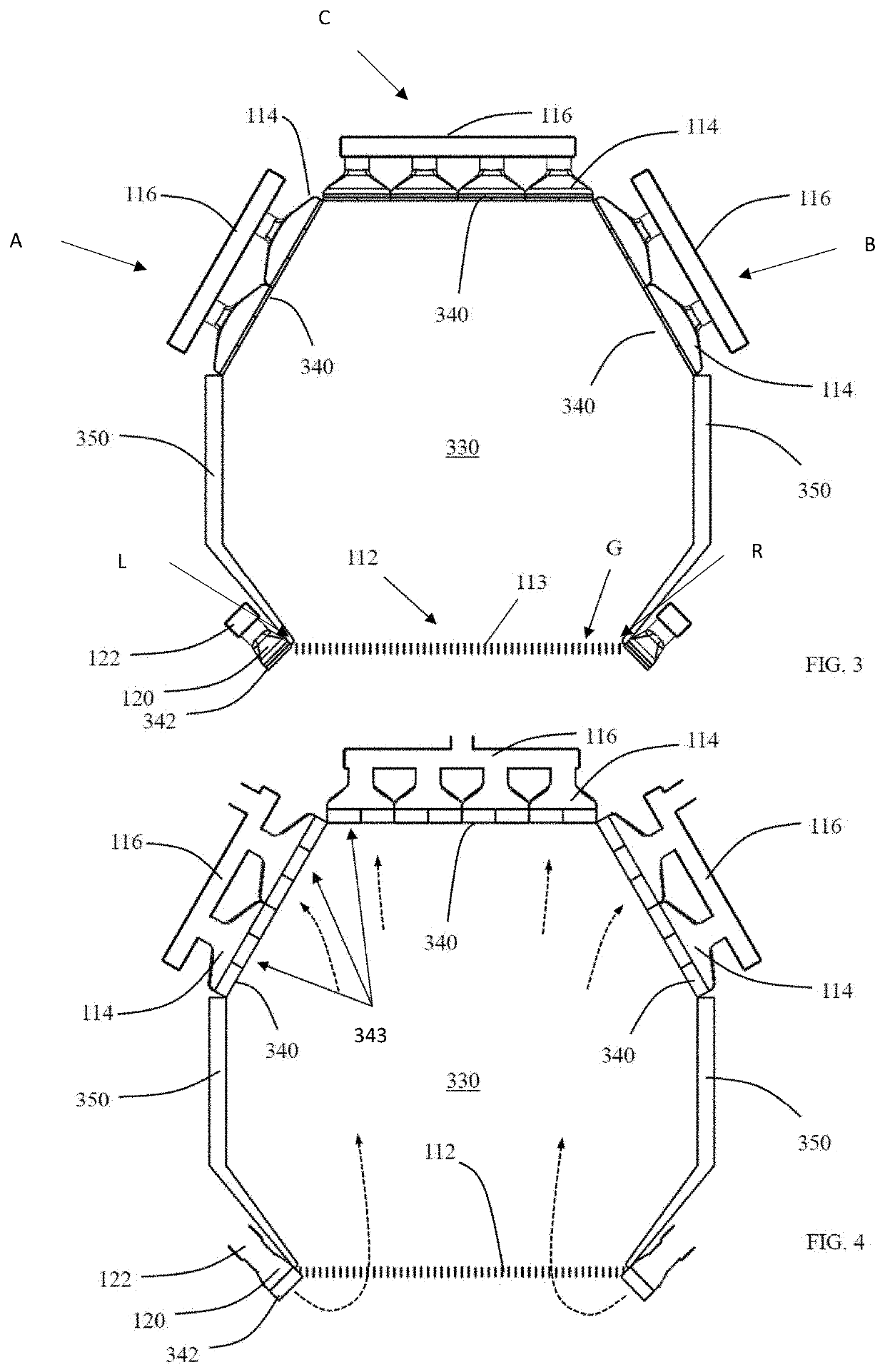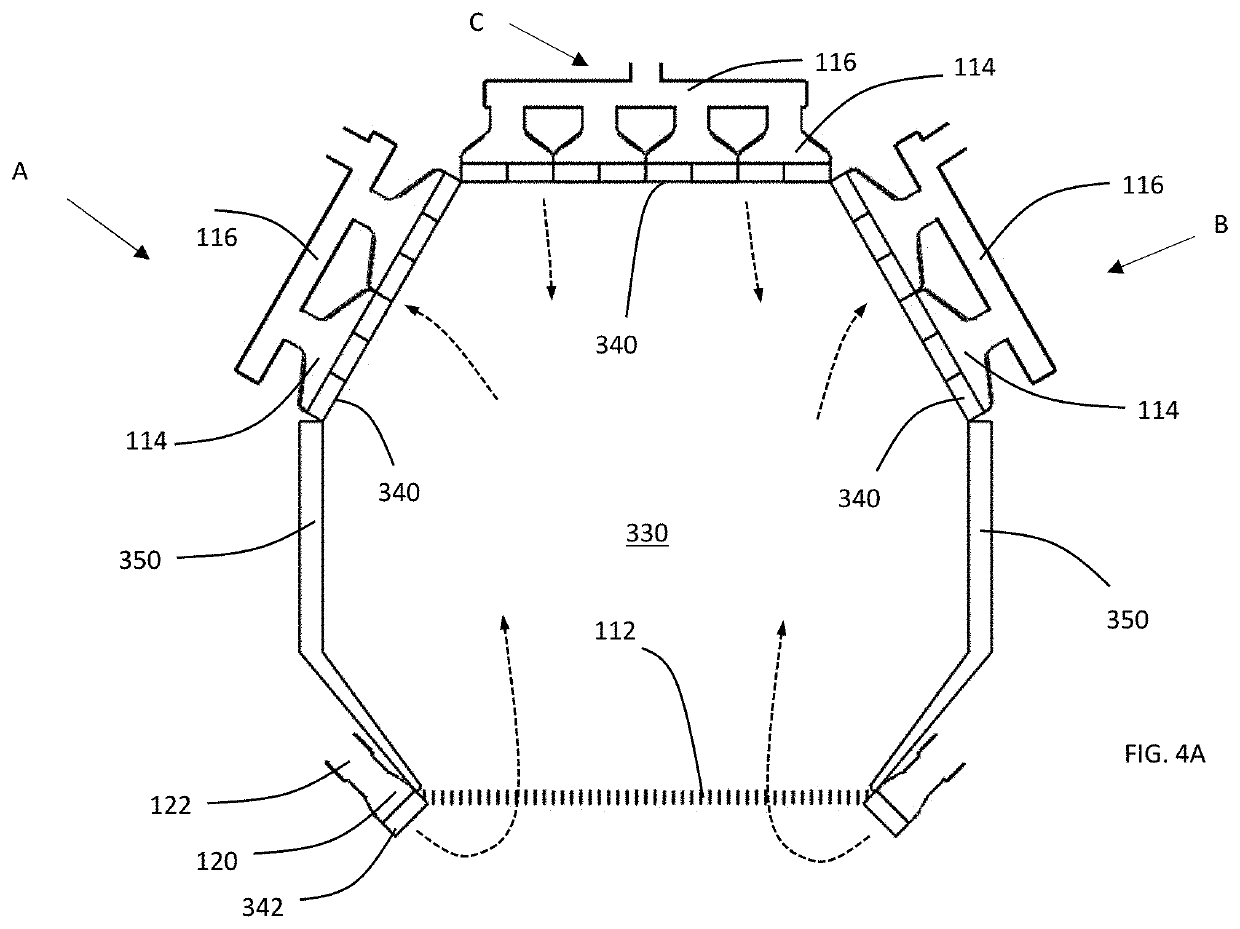Air receiver for solar power plant
a solar power plant and receiver technology, applied in the field of solar power plant air receivers, can solve the problems of inability to provide energy at all times, inability to use solar energy for industrial scale applications, and inefficient and ineffective capture of sun and solar energy conversion
- Summary
- Abstract
- Description
- Claims
- Application Information
AI Technical Summary
Benefits of technology
Problems solved by technology
Method used
Image
Examples
Embodiment Construction
[0023]Described below is a novel air receiver for use in a solar power plant, such as in a power tower of a solar power plant. Illustrated in FIG. 1 is a perspective view of an air receiver 110. The air receiver 110 can receive sunlight and convert that sunlight to heat. The air receiver 110 includes an aperture 112 that receives sunlight that is aimed at the receiver, a plurality of output ports 114 via which heated air (e.g., generated in) the receiver is captured, and at least one output manifold 116 that channeling the heated air away from the receiver 110. The air receiver 110 further includes input ports 120 via which pre-heated air is introduced into the receiver and input manifolds 122 that direct the preheated air to the input ports 120.
[0024]As illustrated in FIG. 1, in one implementation the input ports 120 line the four edges of the aperture 112 in order to capture light spillage, e.g., light that was aimed at the aperture 112 but spilled outside the physical boundaries ...
PUM
 Login to View More
Login to View More Abstract
Description
Claims
Application Information
 Login to View More
Login to View More - R&D
- Intellectual Property
- Life Sciences
- Materials
- Tech Scout
- Unparalleled Data Quality
- Higher Quality Content
- 60% Fewer Hallucinations
Browse by: Latest US Patents, China's latest patents, Technical Efficacy Thesaurus, Application Domain, Technology Topic, Popular Technical Reports.
© 2025 PatSnap. All rights reserved.Legal|Privacy policy|Modern Slavery Act Transparency Statement|Sitemap|About US| Contact US: help@patsnap.com



